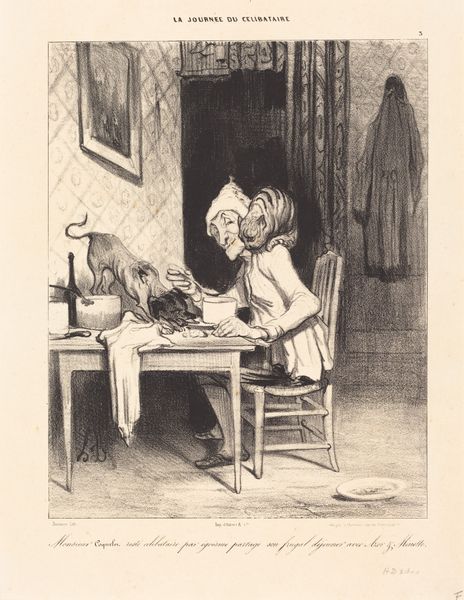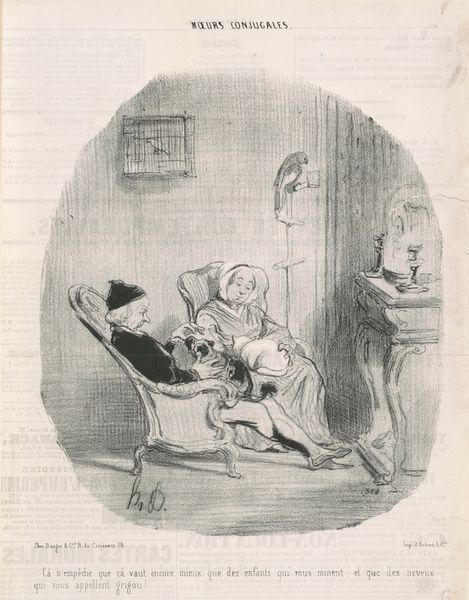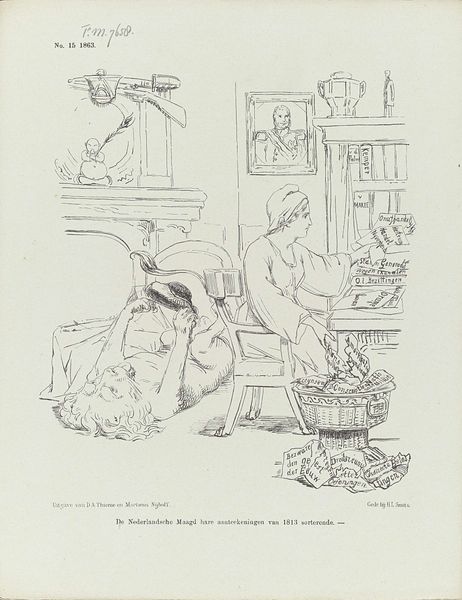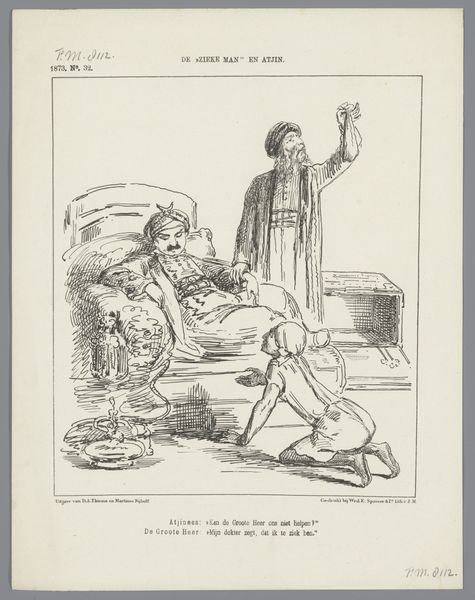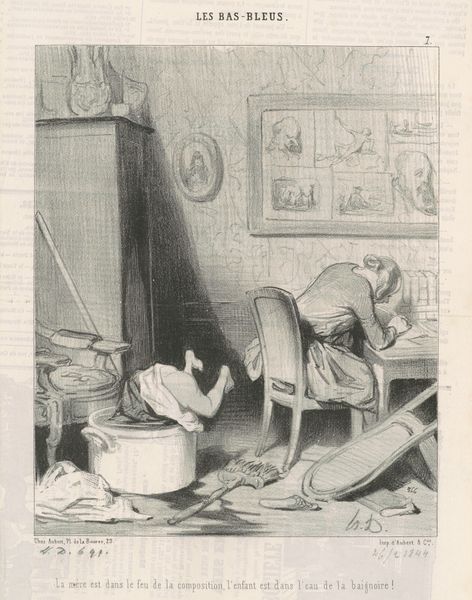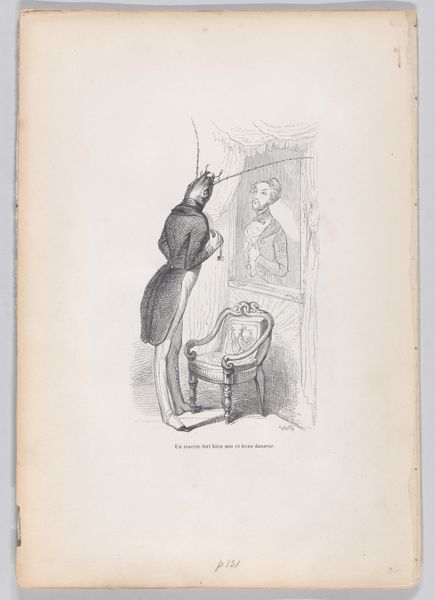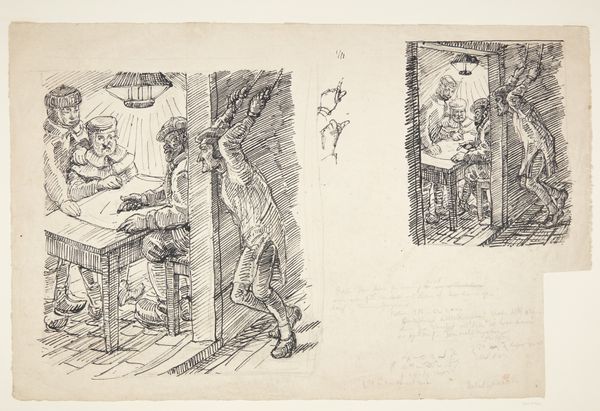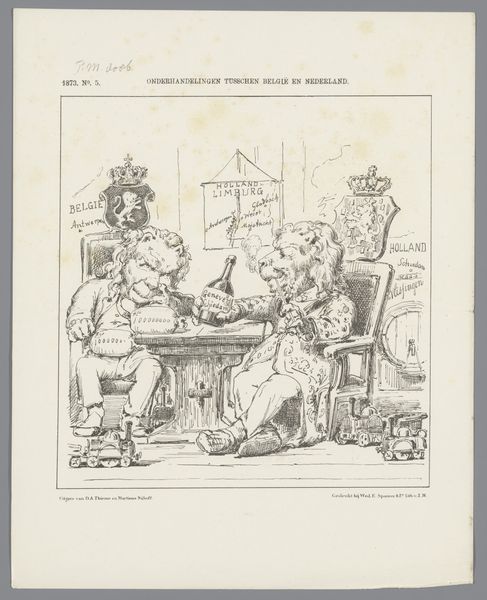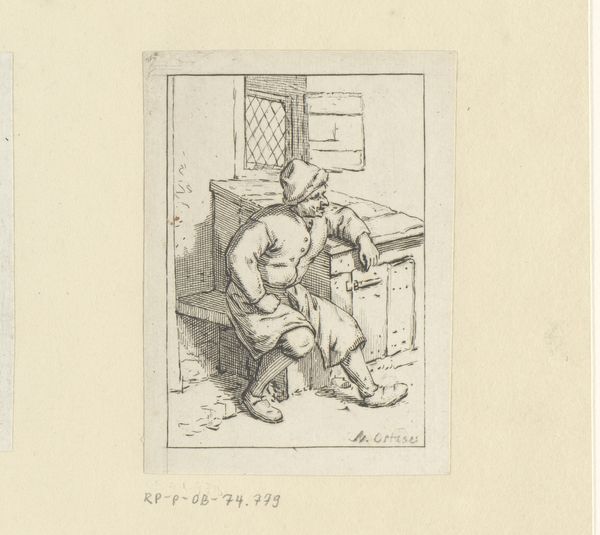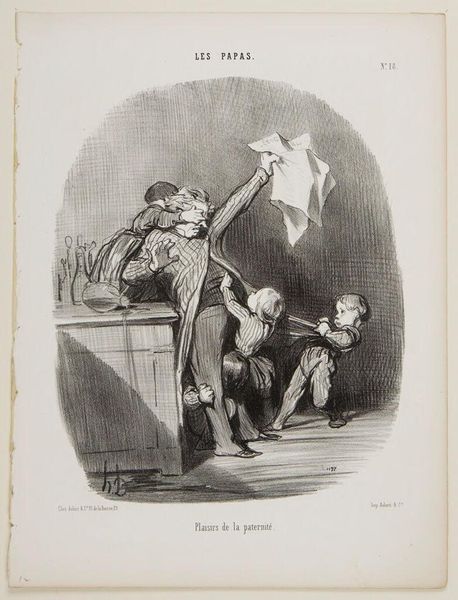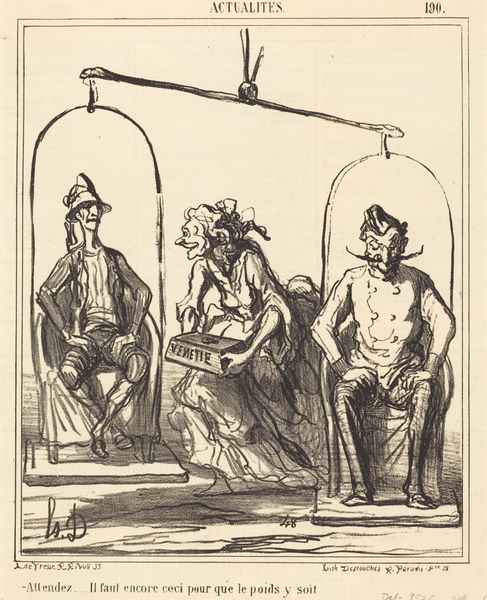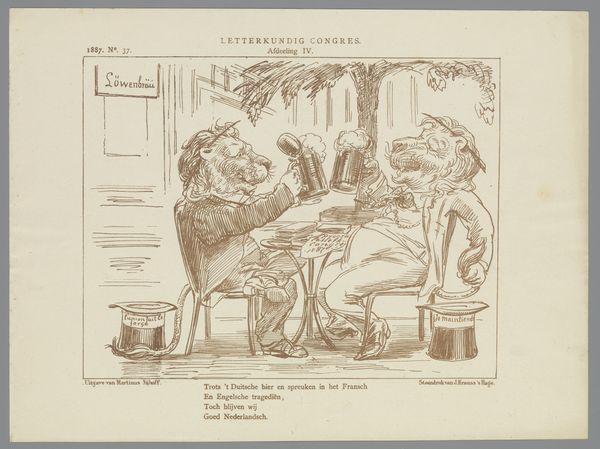
Spotprent op ledigheid van ambtenaren bij afwezigheid van de chef, 1860 1860
0:00
0:00
drawing, ink, pen
#
drawing
#
narrative-art
#
caricature
#
ink
#
pen-ink sketch
#
pen
#
genre-painting
Dimensions: height 275 mm, width 215 mm
Copyright: Rijks Museum: Open Domain
Curator: Look at this ink drawing titled "Spotprent op ledigheid van ambtenaren bij afwezigheid van de chef," which translates to "Cartoon on the idleness of civil servants in the absence of the boss." It was created around 1860 by Johan Michaël Schmidt Crans. What catches your eye? Editor: Well, first, the menagerie of animals mimicking human behavior creates this immediate feeling of… utter chaos. It's whimsical and yet pointed, like a fable gone slightly mad. And the stark, almost clinical line work adds a layer of unsettling clarity. Curator: Absolutely. Crans used the pen and ink medium strategically. The detailed cross-hatching brings to life the textures of fur and feathers. What appears at first glance to be slapstick is, in essence, a commentary on social class and worker relations. Observe the tools: desks, and implements of labor which denote the exploitation of labour, social alienation and means of production in a burgeoning industrialized society. Editor: You’re so right. Look at that hanging figure dangling by a rope attached to his head and beak, the embodiment of suspended duties, literally hanging over them all. There’s a cruelty, almost Kafkaesque, in the visual metaphor. It’s also dark humor, typical of some political cartoons of that time, where such satire was quite biting. I mean, imagine having this above your desk… Curator: It serves as a kind of absurd tableau, doesn't it? Reflecting perhaps not just an individual workplace, but societal indolence overall. We shouldn’t forget the culture of production at that moment: each item – ink, pen, paper, or even those walking sticks and flowerpots referenced in the title– represents another phase within ever more convoluted production lines. Crans is bringing awareness to labor conditions via criticism of bourgeois sensibilities. Editor: That’s such a fantastic angle. Suddenly, the slacking, it has an artistic life, no longer funny just strange… I’m also intrigued by the contrast – how tightly controlled and almost fastidious the lines are versus the scene they render: utter lawlessness. Curator: Indeed. Through art making strategies such as line and figuration Crans delivers both political denouncement alongside art. The social world seeps into art’s function alongside it’s production. Editor: Thinking about it all now...this little sketch contains the full theater of the human, or, well, the animal, condition: satire, social commentary, and that deep, unshakeable weirdness that only truly astute observations can capture. Thanks, Schmidt Crans.
Comments
No comments
Be the first to comment and join the conversation on the ultimate creative platform.
